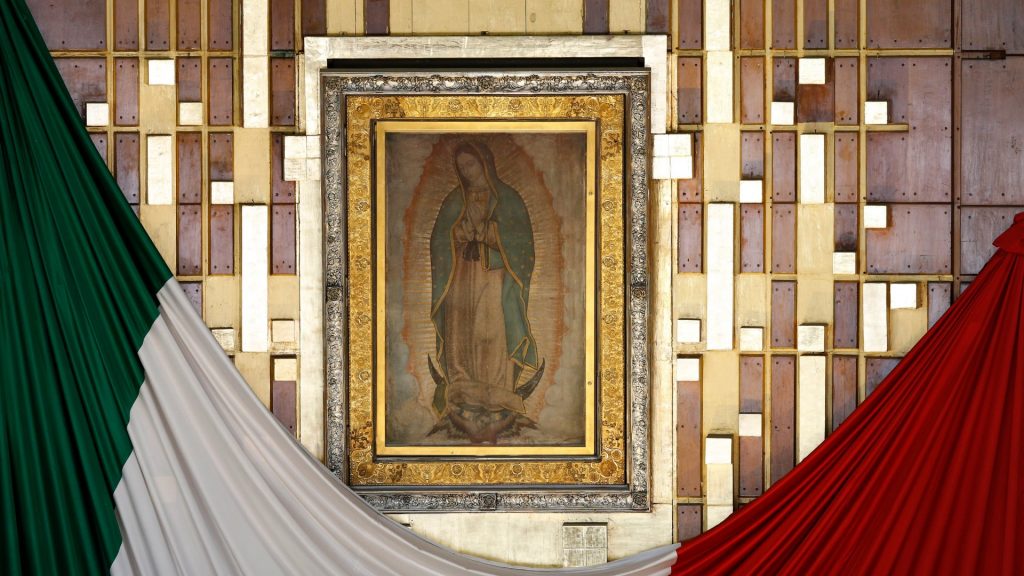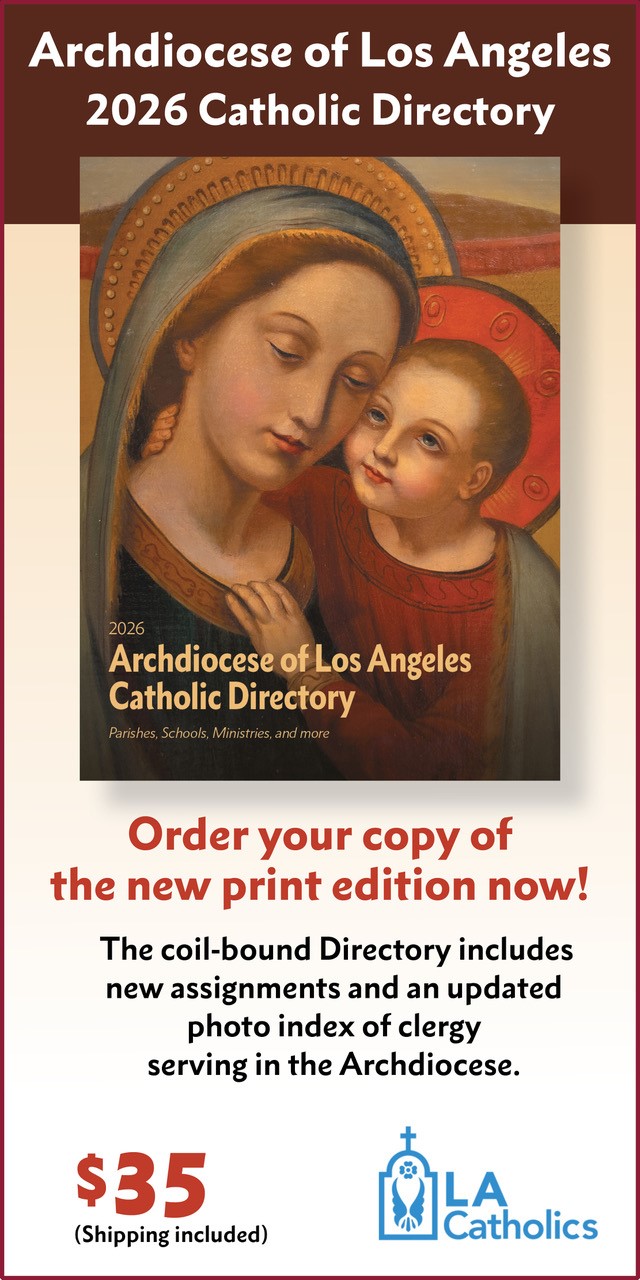Plague. Earthquakes. Violence. The year 1531 did not mark the end of the world for people living in New Spain, but at the time, many of its inhabitants certainly thought it would.
For all the turmoil surrounding colonial life in the region 487 years ago, one supernatural event decisively altered the course of the history of the Americas forever: the apparition of Santa María de Guadalupe to a poor, middle-aged indigenous man on the outskirts of what is now known as Mexico City.
Today, Our Lady of Guadalupe might seem as much a cultural icon as a religious one. The image miraculously received on a “tilma” (“cloak”) by St. Juan Diego has been reproduced in countless forms and settings all over the world, especially in Mexico and the United States.
Easily forgotten in the story of the apparition of Our Lady of Guadalupe to Juan Diego is that it came at a critical moment in history for the newly discovered continent.
Few people today have dedicated more time to understanding the impact of the Guadalupe miracle than Msgr. Eduardo Chavez. A Mexican priest and scholar who is the rector and co-founder of the Institute for Guadalupan Studies in Mexico City, Chavez was the postulator for the sainthood cause of Juan Diego.
Since being ordained a priest in 1981, he’s made it his mission to make sure the world understands the message of Guadalupe is a universal one.
In light of the approaching feast day of Our Lady of Guadalupe (December 12), Chavez spoke to Angelus News about her meaning for today’s world from Rome, where he was attending the International Convention of Shrines hosted by the Vatican.
“There’s a very strong similarity between that time [of the apparition of Guadalupe] and our current age,” said Chavez. “There are so many who are trying to persecute and destroy life from its origin, from the maternal womb … and to silence the Church at all costs, even killing her so that she can’t fight for life.”
As Chavez explained it, the 16th century saw a series of plagues inadvertently transmitted by newly arrived Spaniards claim the lives of millions of natives in present-day Mexico.
It was also a time of constant conflict not only between Aztec natives and Spanish conquerors, but even among the Spaniards themselves. According to accounts from the time, many Spanish missionaries were slaughtered by their military counterparts who feared that baptizing natives and bringing them to the Faith would prevent them from being enslaved and exploited — as some conquistadors such as the infamous Nu√±o de Beltrán Guzmán were known to have done.
Tensions ran so high that at one point, a Spanish judge named Diego Delgadillo tried to assassinate the bishop of Mexico at the time, Fray Juan de Zumárraga.
But a lesser-known source of distress at the time was the series of three major earthquakes that struck present-day Mexico in 1530, the year before the Guadalupe apparitions.
“This was terrible for all the settlers, not just for the indigenous,” said Chavez. “But it was especially terrible for the indigenous, because according to their creation myths, the world was created by four movements, or earthquakes.”
Naturally, the natives feared the world would end in the same way.
“So you can imagine those three earthquakes in 1530, they were just waiting for one more [earthquake] for this whole thing to be over!”
To make things worse for the superstitious Aztecs, a major comet appeared over Mexico in 1531. “For the indigenous, the universe was tearing apart” at this point, said Chavez.

There are many other circumstances surrounding Guadalupe that Chavez has spent much of his academic career studying, such as the meaning of the presence of a black crescent moon (representative of death to the Aztecs) and a serpent (a symbol of life in indigenous culture) depicted in the tilma image of Guadalupe.
According to Chavez, one of the most striking aspects of the apparitions is how they coincided with the winter solstice (according to the Julian calendar used at the time) on Dec. 12, 1531.
The Aztecs spent a period of 80 days (comparable to Lent for Christians, says Chavez) eating only tortillas, salt, and water while offering human sacrifices and performing acts of self mutilation to prepare for the solstice feast of Panquetzaliztli.
As the darkness of night shortened the days in the weeks before the solstice, the Aztecs hoped the sun’s energy would overcome the darkness of night.
“Everything that goes around this feast that falls on Dec. 12 helps you to understand the Eucharist, leads you to understand that Jesus Christ is the only and eternal sacrifice,” said Chavez.
“You come to understand what the Passover means, a concept that the indigenous did not have. They had no idea of resurrection. They had an idea of an afterlife, that lasted four years and that was it. They saw themselves to be custodians of the sun as they died, not as they lived.”
Ultimately for Chavez, the rich and complex story of Guadalupe is ultimately one of a “perfectly inculturated evangelization” centered around a moment in time that even Mexico’s pagan natives could understand as being divinely inspired.
“The Second Vatican Council elaborated on the idea that there are seeds of the Word in cultures, there are good things that God already planted in every culture, and beyond them there is a transcendence that unites them, that makes them participate in the fullness of Jesus Christ,” explained Chavez, who holds a doctorate in Church history.
What does Our Lady of Guadalupe have to do with this?
“She takes the good from each culture and human heart, and knows how to put Jesus Christ in the heart of each person,” said Chavez.

Chavez insisted that what most attracts people to the history of Guadalupe still today is that God chose to manifest himself through inculturation.
Even her name, Chavez explained, combines a name of Jewish origin, “Mary,” and Guadalupe, which is of Arabic origin.
“In this way she is uniting what is Jewish and what is Arab, uniting those who can’t live together, those who want to kill each other, all of that in the Virgin becomes harmony, unity, peace, justice, love, mercy.”
As a canon of the Basilica of Our Lady of Guadalupe, the priest says he’s witnessed countless miracles brought about through Our Lady’s intercession, including medically inexplicable physical healings and the births of children to parents for whom conception was considered impossible.
But even more striking, Chavez said, is the gratitude and devotion shown by the millions of visitors from around the world to the site of the Guadalupe apparitions every year.
“When you hear all this [history], you begin to understand that the Virgin comes precisely to teach, to make known, to give love, to bring with mercy him who is the Way, the Truth and the Life: the Resurrection, he who has destroyed death and gives us eternal life.”
“That is the perfect inculturation achieved by the Blessed Virgin of Guadalupe,” stressed Chavez. “That is precisely for me the key to this inculturation.”
At a time when the world once again finds itself threatened by violence and political chaos and the Church’s internal divisions show the need for reform, Guadalupe’s message is needed more than ever, said Chavez.
“God takes the initiative through the Virgin of Guadalupe to encounter mankind and say through her maternal voice, ‘Don’t be afraid. Don’t be afraid of death, but don’t be afraid of life either, because that’s the source of our joy!’ ”

